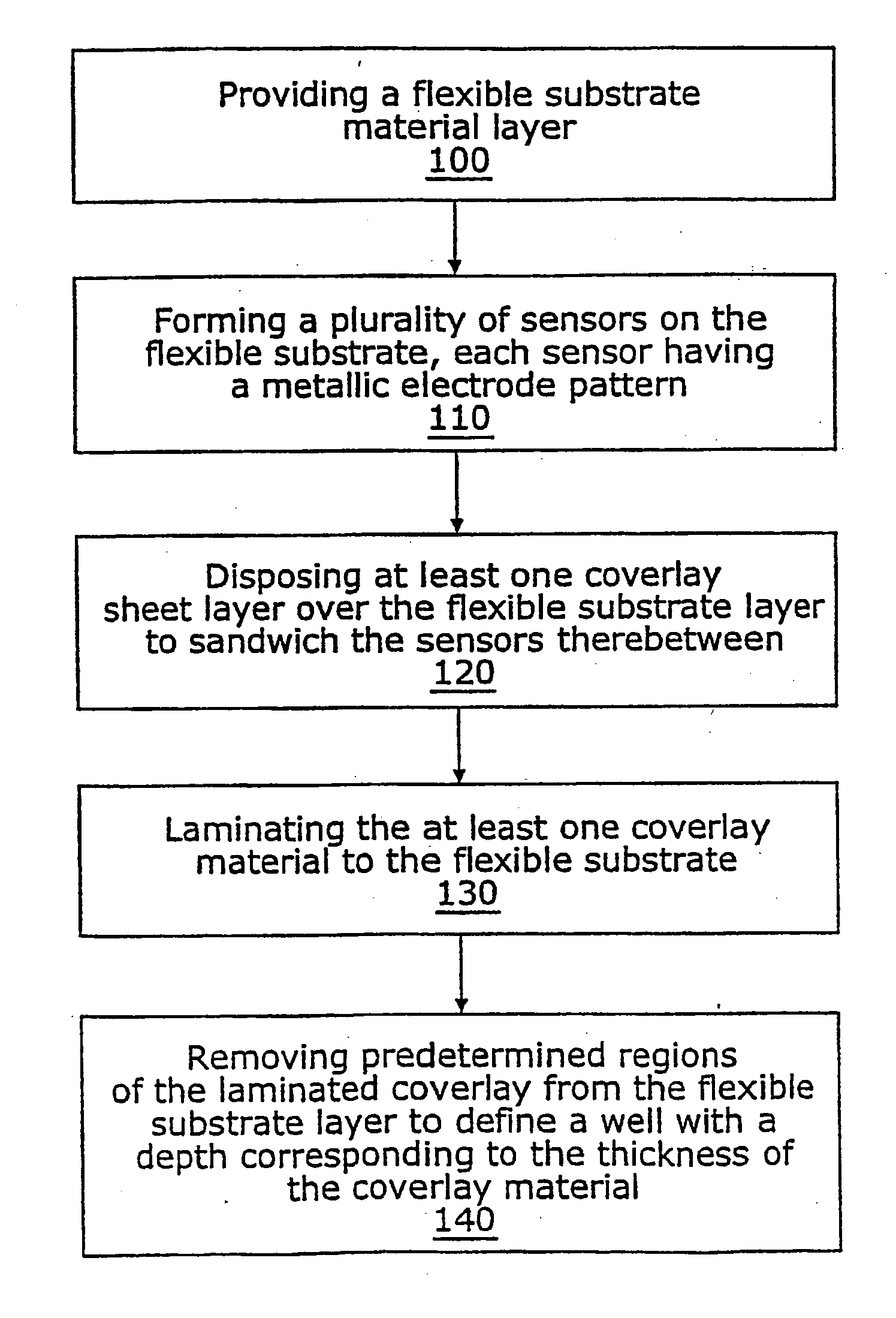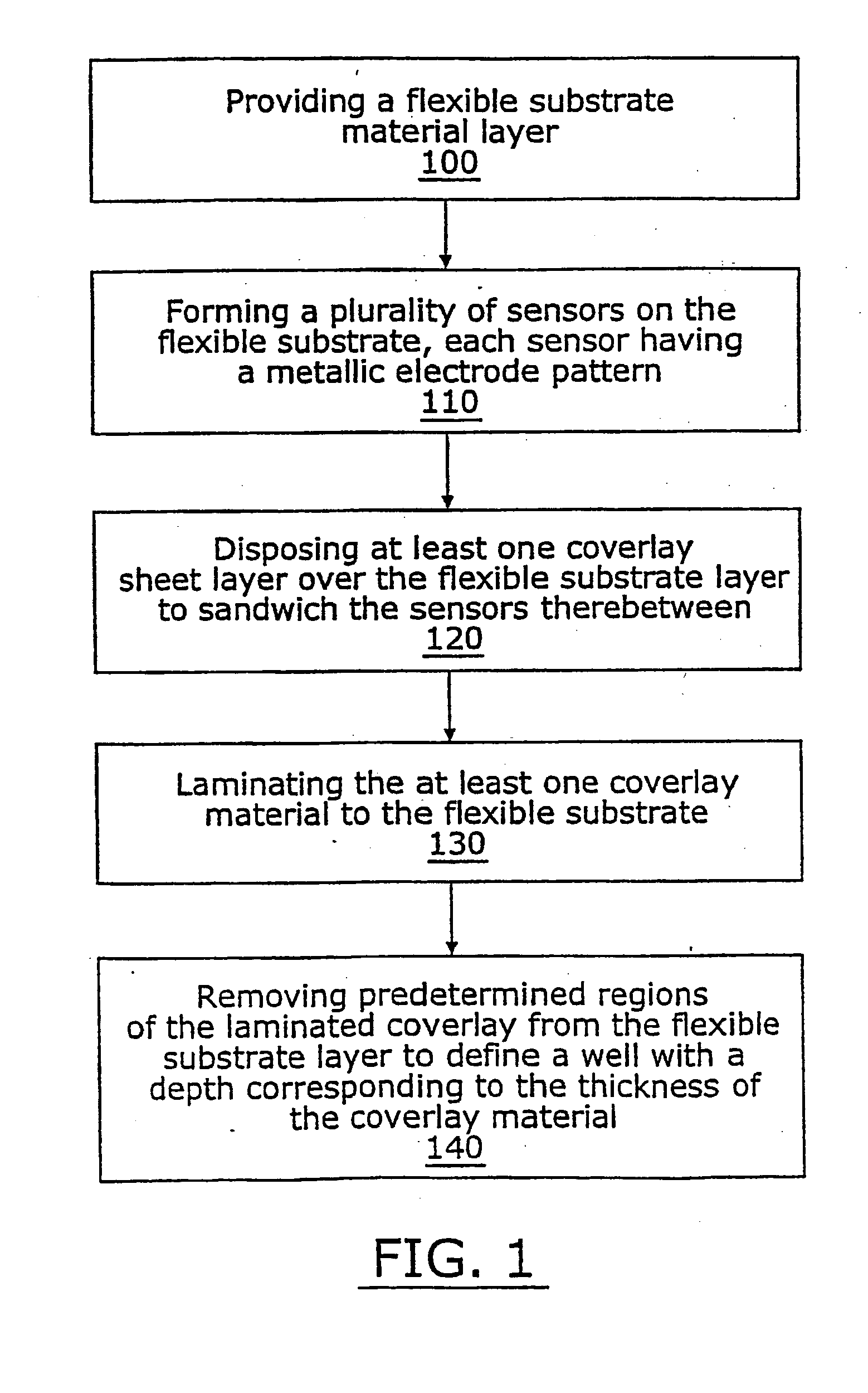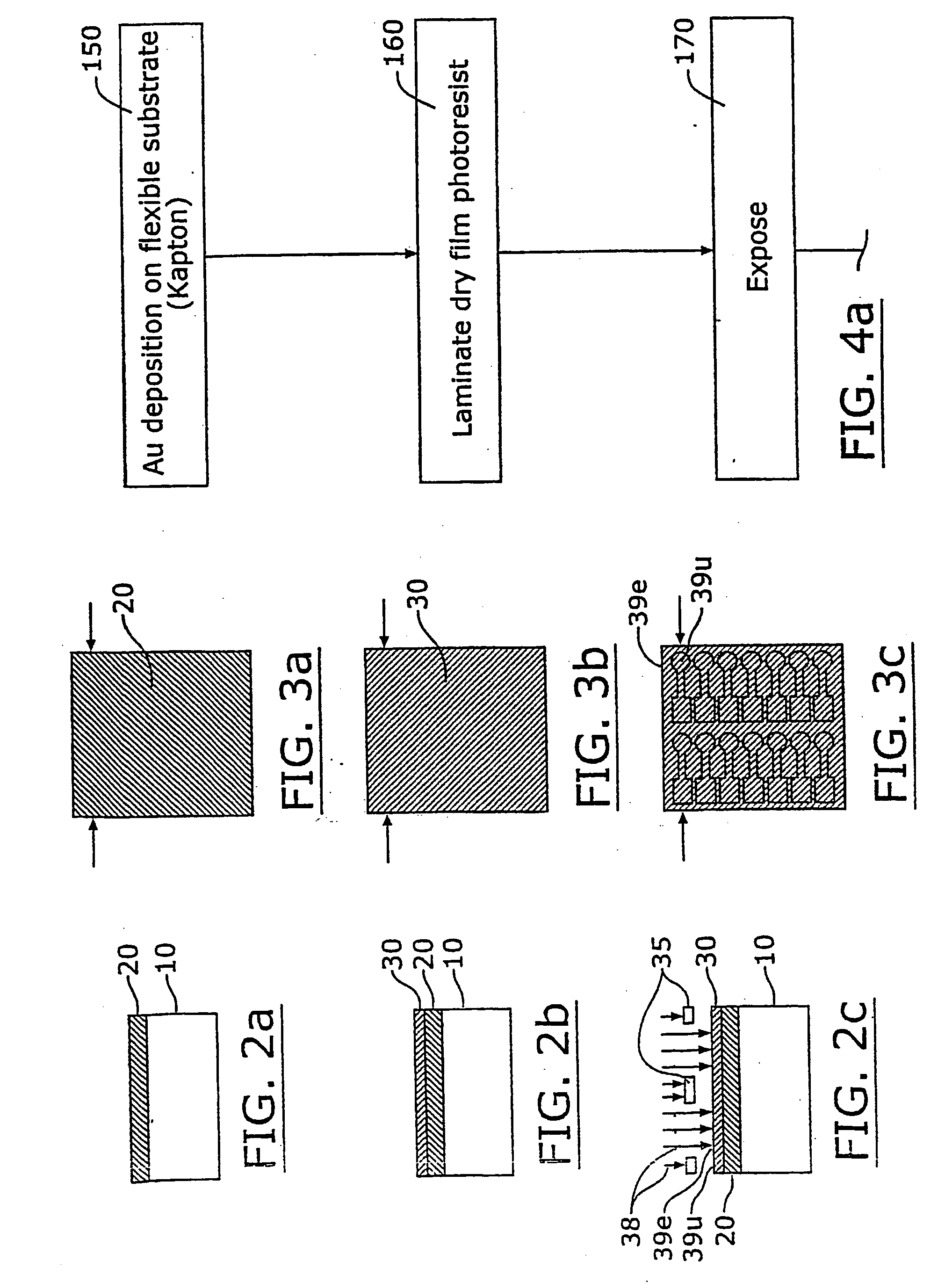Biomedical electrochemical sensor array and method of fabrication
a biochemical and sensor array technology, applied in the direction of instruments, non-metallic protective coating applications, material electrochemical variables, etc., can solve the problems of incompatibility of flexible materials with thin film processing techniques, inability to achieve fine line resolution for small or miniaturized electrodes, and limited well depth and/or precise boundary or perimeter definition during formation
- Summary
- Abstract
- Description
- Claims
- Application Information
AI Technical Summary
Benefits of technology
Problems solved by technology
Method used
Image
Examples
examples
[0053] The following process was used to prepare an article according to embodiments of the invention. According to the method, a gold film or layer is deposited onto a flexible substrate formed of 7 mil thick Kaladex® film using a planar DC magnetron sputtering process and equipment operated Techni-Met Inc. (a roll coating company), located in Windsor, Conn. The thickness of the gold film can range from 30 to 200 nm, with a preferred thickness being about 100 nm. Seed layers of chromium or titanium can be sputtered between the substrate film and the gold layers to promote better adhesion of the gold to the substrate film; however, gold layers sputtered directly onto the substrate film without such seeding can exhibit sufficient adhesion. Plasma treatment of substrate surface can improve the adhesion of gold.
[0054] After the gold was applied to the flexible substrate, a dry film photopolymer resist was laminated to the gold / substrate film. A dry film resist such as that sold under ...
PUM
| Property | Measurement | Unit |
|---|---|---|
| Thickness | aaaaa | aaaaa |
| Flexibility | aaaaa | aaaaa |
| Photosensitivity | aaaaa | aaaaa |
Abstract
Description
Claims
Application Information
 Login to View More
Login to View More - R&D
- Intellectual Property
- Life Sciences
- Materials
- Tech Scout
- Unparalleled Data Quality
- Higher Quality Content
- 60% Fewer Hallucinations
Browse by: Latest US Patents, China's latest patents, Technical Efficacy Thesaurus, Application Domain, Technology Topic, Popular Technical Reports.
© 2025 PatSnap. All rights reserved.Legal|Privacy policy|Modern Slavery Act Transparency Statement|Sitemap|About US| Contact US: help@patsnap.com



